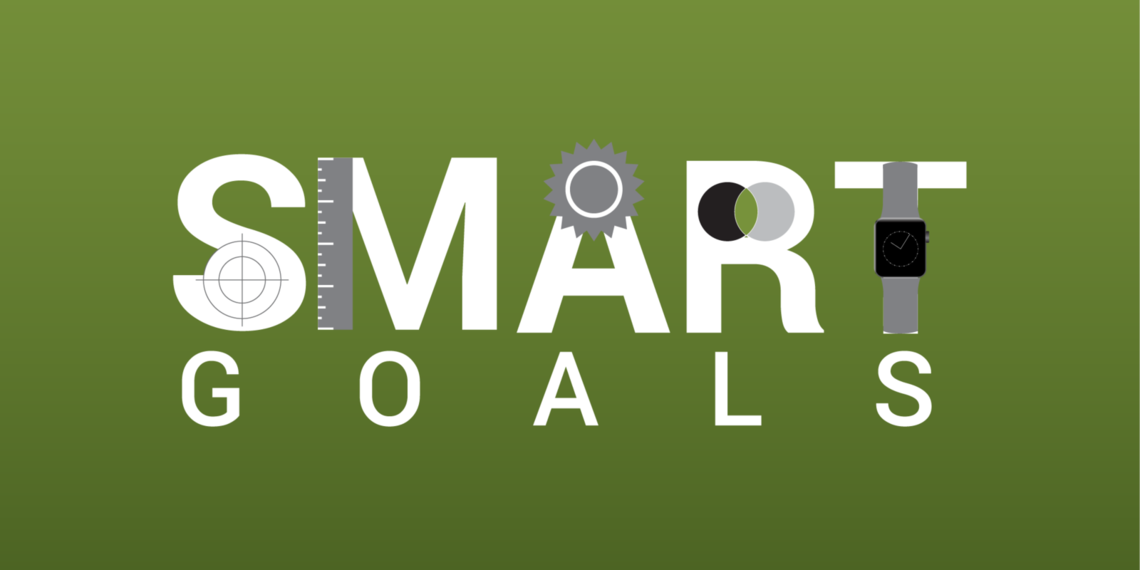Why are resolutions so maddening?
Pick your cliché and January 1st represents it: a new leaf, a fresh start, a clean slate. Resolutions abound on New Year’s Day, but committing yourself to a goal is only the beginning. Recent research by Fast Company found that after one week, 27% of us have abandoned our goals. After two weeks, that number increases to 31%. By the end of January, more than half of us have given up on our New Year’s resolution. By the end of the year? Sad to say but 90% of us will have fallen short.
Sticking with anything new is difficult. Yet it might be the way we set our goals that leads to failure. Often, we think too big or set a resolution in response to social pressure. We know what we want to accomplish, but underestimate the effort it will require.
Rather than capitulating to our shortcomings, try using Lean skills instead. Transforming an ambiguous resolution into a SMART goal can help.
Start SMART–here's an application for that
SMART goals help you break down your resolution into achievable, appropriate, quantifiable activities. Better yet, SMART goals can encourage incremental progress throughout the year. This is the starting point for any successful improvement effort.
Have a resolution in mind? Give our SMART goal generator a try. Simply respond to each question prompt and send yourself an email reminder with the goal!
What makes a goal SMART?
We found Emily Esposito’s handy SMART goal template with guiding questions a useful tool. SMART stands for “Specific, Measureable, Attainable/Achievable, Relevant, Time-Bound.”
- S pecific: What do you want to accomplish? Who needs to be included? When do you want to do this? Why is this a goal?
- M easureable: How can you measure progress and know if you’ve successfully met your goal?
- A ttainable/Achievable: Do you have the skills required to achieve the goal? If not, can you obtain them? What is the motivation for this goal? Is the amount of effort required on par with what the goal will achieve?
- R elevant: Why am I setting this goal now? Is it aligned with overall objectives?
- T ime-bound: What’s the deadline and is it realistic?
Consider adopting process goalsProcess goals are the small steps you take to achieve your desired performance or improvement outcome. (run 30 minutes per day at least 5 days a week) as well as a performance goalPerformance goals are what you are trying to achieve or improve. (8-minute mile) to further break your SMART resolution into achievable chunks. And don’t discount the unexpected benefits that may come from your new commitment—that friend who expresses interest in running with you can actually improve your chances of following through.
With SMART goals in hand–and our handy app to help–it’s even easier to follow through on your New Year’s resolution.
Peter Anderson
Nick McGregor
Sometimes the most impactful change comes from simply asking, “Why are we doing things this way?” Pediatric infectious disease professor Adam Hersh explains the impact of practice inertia on antibiotic treatment in pediatric patients, and how questioning the status quo improved outcomes and reduced cost.
Utah’s Chief Medical Quality Officer Bob Pendleton describes a strategic challenge faced by many industries, including health care. We are at risk for prioritizing achievement of metrics over our purpose. He challenges us to think beyond metrics to what patients actually need from us: patient-centered, outcome-focused, affordable care.
Thinking about teams differently did more than improve our inpatient discharge process. It gave everyone a shared vision: every single patient in the right bed, at the right time. Patients now leave the hospital earlier, all while monthly discharges have increased. Tracey Nixon, director of capacity management, shares how they did it.
